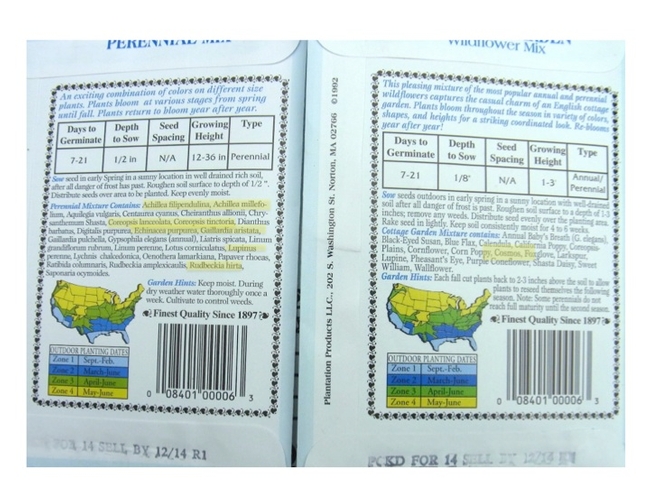- Author: Christine Casey
The Haven is all about teaching, research, and outreach to save the bees. Our programs are consistently rated highly by our visitors; we've grown every year of our existence and would love for that to continue. For details about our past accomplishments, please see our annual reports: 2018, 2017, 2016, 2015, and 2014.
A grant that provided half of our support recently ended, and I am seeking your support to help keep these successful programs going.
What you can do:
1. Donate here. The Haven is supported solely by grants, donations, and volunteers. A generous Häagen-Dazs gift established the garden, but Häagen-Dazs does not provide ongoing support. Recent funding has come from the California Department of Food and Agriculture, the UC Davis College of Agriculture and Environmental Sciences, the USDA, and the California Center for Urban Horticulture.
Individuals and local clubs such as the Roseville Better Gardens Club and the Sacramento Area Beekeepers Association have also made much-appreciated donations.
If the 3500 people who've attended a tour, Haven event, or class so far this year each gave $10, we'd be covered for seven months. While large donations are great, many small donations are just as important.
2. Attend our fall fundraiser on September 21. Details will be posted soon on the Haven's web page.
Thank you. Together we can keep this unique garden going strong.
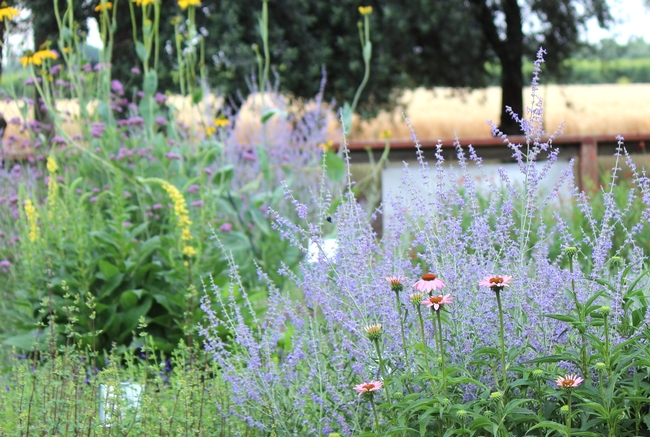
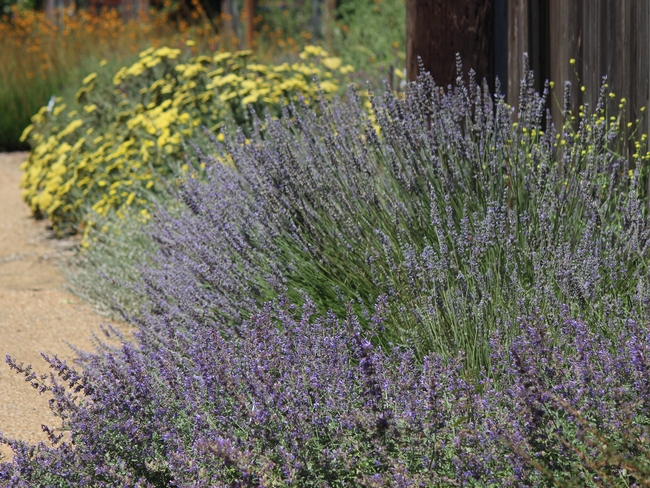
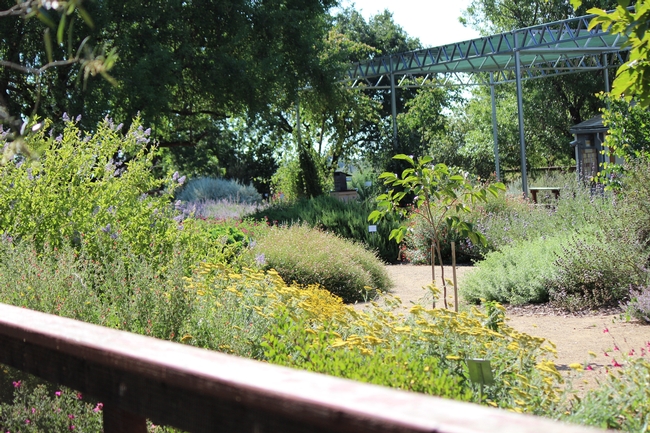
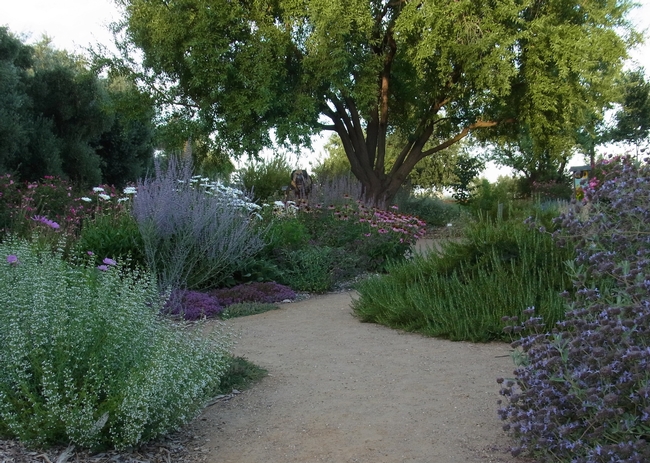
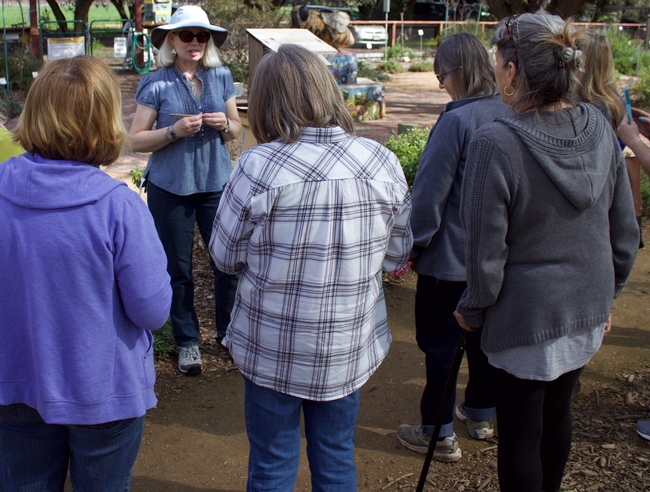
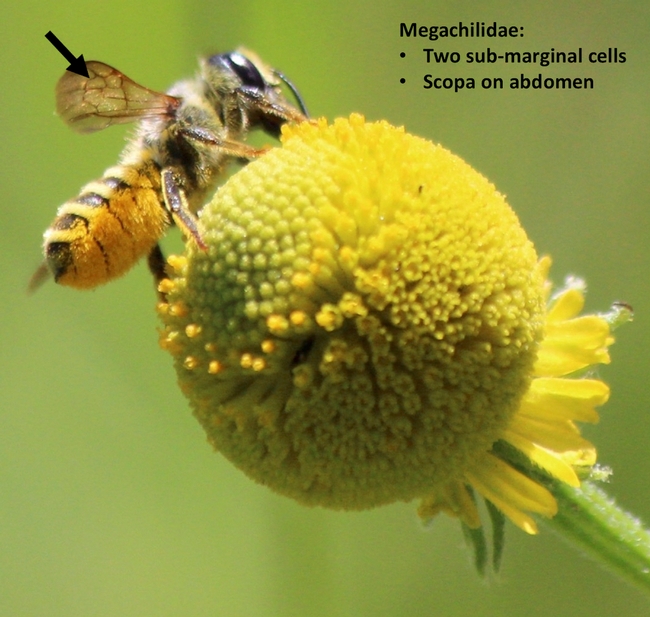
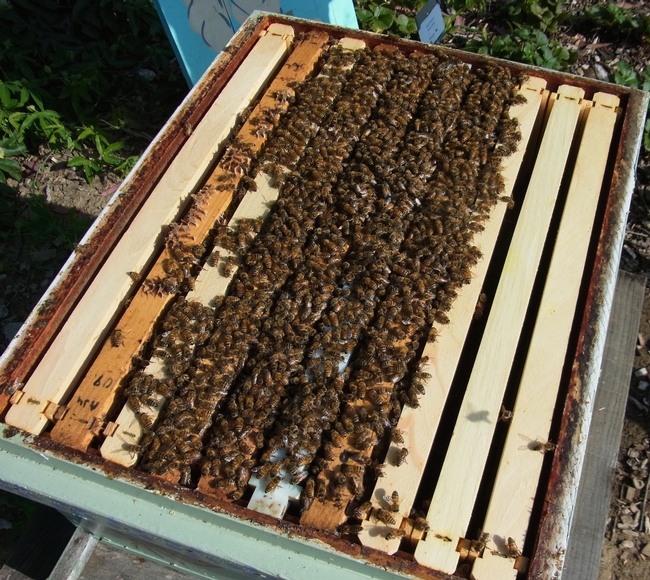
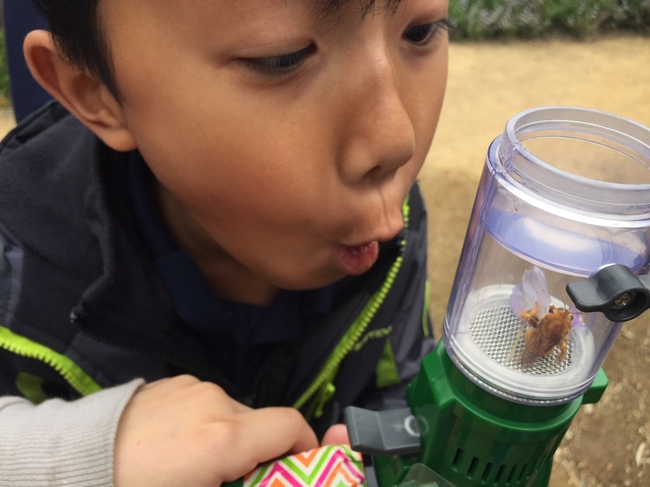
- Author: Christine Casey
Part of our mission at the Honey Bee Haven is to inspire the planting of other bee gardens. But what are apartment dwellers or others without the resources for gardens to do? Plant a container garden!
The concrete planters at the Haven were designed with this idea in mind. Executed by students in the Department of Entomology and Nematology's ENT 001 class (part of the campus Art/Science Fusion Program), they depict bee plants that grow well in pots. To reinforce the message, some of these plants are growing in the containers. Two examples are blanket flower (Gaillardia x grandiflora) and black-eyed Susan (Rudbeckia fulgida). 
Planting a container bee garden at home is easy. Using supplies from a local dollar store, I put together a bee garden for less than $5. This includes a container, a bag of potting soil, two packs of seed, and a small bowl and stones to create a water source.
Will this work? If this small container has the only flowers within sight, then bees probably won't find it. If you're in an area with extensive bee-friendly landscaping, or if all the apartments in a complex plant these gardens, then I would expect them to be used by bees. I'll post updates throughout the summer on what's blooming in the Five Dollar Bee Garden and what bees I see on the flowers.
Here's how to do it:
Supplies: potting soil, container (I purchased a 1 ½ gallon wastebasket), 2 packs of seed, small pet bowl, and a bag of stones. The seeds were $0.25 each and all other supplies were $1 each.

Some of the good bee plants in the two seed mixes I purchased are yarrow (Achillea millefolium), coreopsis (Coreopsis lanceolata), cosmos (Cosmos bipinnatus), coneflower (Echinacea purpurea), blanket flower (Gaillardia aristata), lupine (Lupinus perrenis), black-eyed Susan (Rudbeckia hirta).
Bee water source: Along with pollen and nectar, bees need to drink! A shallow dish with stones that bees can stand on to access water is perfect.